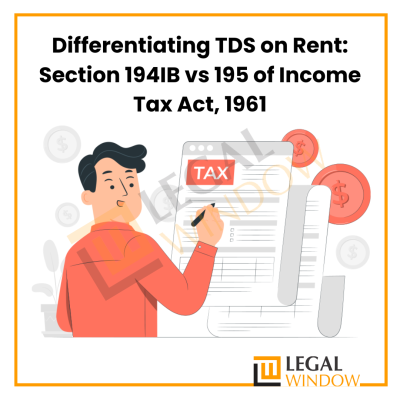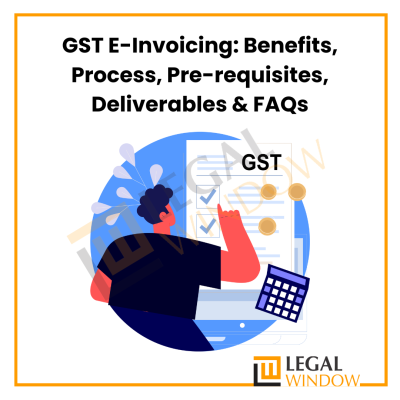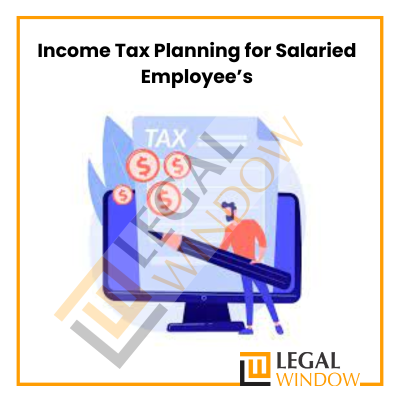 An auditor should utilize Form 3CD when examining the financial records of taxpayers who are the subject of tax audits. According to the Income Tax Act, 1961 regulations, a Chartered Accountant must provide an audit report in the required format. The objective of this article is to provide a brief overview of Form 3CD, whose goal is to create a standardized reporting format of an audit report for audits carried out to fulfill Section 44AB’s criteria. In this write-up, we will discuss about Form 3CD of the Tax Audit Report.
An auditor should utilize Form 3CD when examining the financial records of taxpayers who are the subject of tax audits. According to the Income Tax Act, 1961 regulations, a Chartered Accountant must provide an audit report in the required format. The objective of this article is to provide a brief overview of Form 3CD, whose goal is to create a standardized reporting format of an audit report for audits carried out to fulfill Section 44AB’s criteria. In this write-up, we will discuss about Form 3CD of the Tax Audit Report.
| Table of Content |
Quick Look
Due to the necessity to compile all of the financial information from the previous fiscal year and base the final tax due on it, the time between June and September is a particularly difficult one for taxpayers.
Section 44AB’s “Tax Audit” cap is set at Rs. 5 crores (the threshold cap is Rs. 10 crores when at least 95% of company transactions are conducted digitally). This process is much more difficult if the taxpayer is the subject of an audit since one must not only submit a return but also a tax audit report to the income tax authorities. We would have heard of or seen the “Form 3CD” in this situation.
Before we shall move on to discuss Form 3CD of the Tax Audit Report, let us discuss, what Tax Audit is and what Tax Audit Report is.
Meaning of Tax Audit
Under the Income Tax Act, 1961, a tax audit is a cross-examination of the taxpayer’s books of accounts by a chartered accountant who holds a full-time Certificate of Practice.
The circumstances under which a tax audit becomes required for some taxpayers are covered by Section 44AB. A tax audit’s primary goal is to ensure that the financial records are accurate and to prevent fraud and tax evasion.
According to the Income Tax Act, 1961, a tax audit entails a chartered accountant with a full-time Certificate of Practice cross-examining the taxpayer’s books of accounts. Section 44AB addresses the situations in which a tax audit is necessary for some taxpayers. The main objectives of a tax audit are to assure the accuracy of the financial records and to stop fraud and tax evasion.
Tax Audit Forms under Tax Audit
The Incomes established two kinds of tax audit forms:
- Report of the Audit: The audit report would be in accordance with either Form 3CA or Form 3CB. People whose accounts have been audited under any legislation other than the income tax laws should fill out Form 3CA. For individuals whose accounts have not been audited in accordance with any other legislation, use Form 3CB. In light of this, we may state that this is for those whose tax returns are being examined.
- Statement of Particulars: There are 44 clauses in this form where the auditor is required to report on the various items included therein. These clauses are split into two parts: Part A offers the fundamental factual information about the assessee, and Part B contains the specifics of the numerous income tax regulations compliances that must be provided.
- The fundamental factual information regarding the assessee is covered in Part A.
- The information required to be supplied about different income tax rules compliances is included in Part B.
Meaning of Tax Audit Report
Using certain “Audit Forms” that have been established by the Income Tax Department, the individuals performing the audit must record their findings in a report. Forms 3CA and 3CB are mandated under Section 44AB. The auditor must also provide a form 3CD in addition to these two forms. Let’s look at these forms in further depth.
Form 3CD of Tax Audit Report
Due to the necessity to compile all of the financial information from the previous fiscal year and base the final tax due on it, the time between June and September is a particularly difficult one for taxpayers.
Section 44AB’s “Tax Audit” cap is set at Rs. 5 crores (the threshold cap is Rs. 10 crores when at least 95% of company transactions are conducted digitally). This process is much more difficult if the taxpayer is the subject of an audit since one must not only submit a return but also a tax audit report to the income tax authorities.
A chartered accountant creates Form 3CD on behalf of assessees who have their accounts audited. The purpose of the form is to provide the audit report’s specifics for any of the forms listed in Section 44AB.
FORM 3CD Components
Form 3CD is split into two parts. Below is a list of all of its comprehensive components:
Part A: Included in Part A are the following components:
-
- The taxpayer’s name
- Address
- Permanent Account Number (PAN)
- If any indirect taxes, such as excise taxes, service taxes, sales taxes, customs duties, etc., are owed by the taxpayer.
- Current Return Status
- The pertinent prior year
- Year of assessment
- The relevant provision of section 44AB that governs how the audit was done
Part B: Included in Part B are the following components:
- If the entity is a business or group of people, the partners’ or members’ names and the percentages of profit sharing should be specified.
- The specifics of any changes to the partners, members, or their profit-sharing percentage since the last date of the preceding year.
- Nature of the profession or business. The specifics of the shift, if there is one, in the nature of the company or profession.
- Whether or if books of accounts are required under section 44AA, and if so, a list of those required books.
- List of the addresses where the books of accounts are kept, along with the books’ current status.
- List of accounting books and types of documents that were inspected.
- Whether there are any earnings and gains included in the profit and loss Account that are assessable on a presumptive basis; if so, please specify the amount and the applicable section.
- Accounting strategy used the previous year
- Whether the used accounting technique had changed in any way. If so, what impact did it have on profit or loss?
- The closing stock was valued using a prior year’s methodology.
- Information on the capital asset that was converted to stock.
- Sums that are not shown in the profit and loss account.
- Land or a building being transferred for less than the value adopted, assessed, or assessable by any authority of a State Government mentioned in sections 43CA or 50C during the preceding year.
- Details of the depreciation that may be taken into account for each item or group of assets under the Income Tax Act, 1961.
- Sums that are permitted under Sections 32AC, 33AB, 33ABA, 35(1) (1), 35(1) (2), 35(1) (2a), 35(1) (3), 35(1) (4), 35 (2AA), 35 (2AB), 35ABB, 35AC, 35AD, 35CCA, 35CCB, 35CCC, 35CCCD, 35D, 35DD, 35DDA, and 35E.
- An employee receives a bonus or commission for work performed when the employee would have otherwise received the money as profit or a dividend.
- Information on employee contributions made to the different funds is mentioned in section 36(1) (va).
- Information on the sums that were debited to the profit and loss account and were in the form of capital, personal, advertising expenses, etc.
- According to Section 23 of the Micro, Small, and Medium Enterprises Development Act of 2006, the amount of interest is unacceptable.
- Information on payments paid to the people listed in section 40A (2) (b).
- sums that are considered profits and gains under sections 32AC, 33AB, 33ABA, or 33AC.
- Any profit that is subject to taxation under section 41 and the calculation thereof.
- The stated responsibilities for any amount mentioned in section 43B clauses (a), (b), (c), (d), (e), or (f).
- The total amount of Central Value Added Tax Credits that were used or claimed during the previous year, as well as how those Credits were treated in the Profit and Loss Account and how Unused Central Value Added Tax Credits were handled in the Accounts
- Specifics of past period’s revenue or expenses that were credited to or debited from the profit and loss account.
- Whether, as described in section 56(2)(viia), the assessee obtained any property during the previous year that was a share of a corporation in which the public did not have a considerable stake, either without consideration or for insufficient consideration, and if so, what exactly was received.
- If the assessee received any payment for the issuance of shares during the previous year that exceeded the fair market value of the shares as described in section 56(2)(viib), please provide details.
- Information about any hundi loan or repayment that is made in a way other than with an account payee cheque.
- Information on loans or deposits made during the preceding year that exceed the cap set out in Section 269(SS).
- Details of the depreciation allowance or brought-forward loss.
- Section-by-section information on any deductions that may be allowed under Chapter VIA or Chapter III.
- Whether the assessee must withhold or collect tax in accordance with Chapter XVII-B or Chapter XVII-BB rules, and if so, what specifics must be provided.
- Whether the assessee provided the tax deductibility or collection statement within the required timeframe. If not, the necessary information.
- whether or not the assessee must pay interest according to section 201(1A) or section 206C (7). If so, give the needed information.
- Quantitative information on the main traded goods in the case of trading issues.
- Quantitative information on the main components of final goods, byproducts, and raw materials in the case of a manufacturing company.
- Details of tax on dispersed earnings under section 115 (O) for a domestic company.
- Whether any cost audits were performed, and if so, the specifics of any disqualifications or disagreements that the cost auditor may have reported or detected.
- Whether any audits were performed in accordance with the Central Excise Act, 1944, and if so, what specific issues led to the auditor’s disqualification or disagreement with any topic, item, value, or quantity.
- Whether an audit was performed in accordance with Section 72A of the Finance Act, 1994 with regard to the valuation of taxable services; if so, please include any details of disqualification or disagreement on any issue(s) that the auditor may have reported or detected.
- Information on revenue, gross profit, etc., for the most recent year and the year before.
- The specifics of any tax legislation other than the Income Tax Act, 1961 and the Wealth Tax Act, 1957 that resulted in a demand being made or a refund being granted during the previous year, as well as the specifics of any related proceedings.
All about Clause 44 of FORM 3CD of Tax Audit Report
Clause 44 of the Form 3CD is valid for Assessment Year 2022-23, i.e. for the Financial Year 2021-22, because compliance with this clause was suspended until 31 March 2022, but the clause is required for any reports submitted after that date. As of now, the audit work is in full swing. The ICAI released a revised Guidance Note dated August 14, 2022, on August 19, 2022, with regard to Clause Number 44.
Experts at Legal Window have tried to summarize the practical important points linked to this compliance as follows:-
- Tabular Representation of Clause 44 of FORM 3CD of Tax Audit Report
| Serial Number | Description |
| 1. | The total Expenditures, including capital Expenditures (purchases of Fixed Assets), must be reported in consolidated form. There is no requirement to report separate numbers. It is important to note that both income and capital expenditure figures must be included. |
| 2. | Depreciation is not required to be disclosed. |
| 3. | Transactions that are neither Supply of Services or Supply of Goods as defined in Schedule III of the CGST Act, 2017 are exempt. Salary, for example. All expenditures described by Schedule III are exempt from reporting requirements under Clause 44. |
| 4. | Non-GST expenditures, such as those on petroleum items, will be classified as “Exempted supply.” |
| 5. | Total payments to registered entities in column 6 are the sum of columns( hereinafter referred to as “Col.”) 3, 4, and 5. There is no need to look up the specific definition of “payments” here. |
| 6. | Expenditures for Non-GST Registered Entities are shown in Col. No. 7. All expenses incurred by unregistered sellers must be reported in Col.No.7. |
| 7. | The total of Cols. 6 and 7 should match the total of Col. 2. |
| 8. | In worthy circumstances when such information is presented by the assessee, a reasonable disclaimer can be issued; but, in my opinion, such disclaimers should not be made on a regular basis, and if the assessee has provided reasons for the same, the reasons should also be mentioned in the report. |
Important points to Ponder
Following are the important points that one should ponder:
- Since audits for the Fiscal Year 2021-22 are now underway, we should investigate how to report and comply with this provision, as well as how the Assessee under audit will provide data under this paragraph.
- The primary responsibility for submitting the details is that of the Auditee, and the information submitted under this clause may be validated using the GSTR-2A, GSTR-2B, AIS, and other records accessible to the dealer.
- The majority of the information necessary for this provision is already accessible to legislators in the form of GSTR-2A and AIS because the majority of the expenditure on which GST has been paid is already on record, and the remainder is Exempted and Non-GST payers. In most situations, lawmakers understand the purpose of this new information in Form 3CD, but because the provision exists, the Assessee and Auditor must follow and comply with it.
 Takeaway
Takeaway
Different laws require different sorts of audits, such as business audits, statutory audits, cost audits, stock audits, GST Audits, and so on. Similarly, an audit funded by income tax is referred to as a ‘Tax Audit.’ A tax audit is an examination or study of the books of any business or trade conducted by taxpayers. It makes estimating income for ITR filing easier. It is the taxpayer’s responsibility to have their accounts audited. A Chartered Accountant is expected to cross-examine the taxpayer’s books of accounts and submit the results in the tax audit report.
To avoid any processes, it is critical to submitting details with correctness. Further, you can also connect with the Experts at Legal Window if you are facing any difficulty in Audits; you can get your Audits done through us.
CA Pulkit Goyal, is a fellow member of the Institute of Chartered Accountants of India (ICAI) having 10 years of experience in the profession of Chartered Accountancy and thorough understanding of the corporate as well as non-corporate entities taxation system. His core area of practice is foreign company taxation which has given him an edge in analytical thinking & executing assignments with a unique perspective. He has worked as a consultant with professionally managed corporates. He has experience of writing in different areas and keep at pace with the latest changes and analyze the different implications of various provisions of the act.
Categories
- Agreement Drafting (23)
- Annual Compliance (11)
- Change in Business (36)
- Company Law (148)
- Compliance (90)
- Digital Banking (3)
- Drug License (3)
- FEMA (17)
- Finance Company (42)
- Foreign Taxation (6)
- FSSAI License/Registration (14)
- GST (120)
- Hallmark Registration (1)
- Income Tax (202)
- Latest News (34)
- Miscellaneous (165)
- NBFC Registration (8)
- NGO (14)
- SEBI Registration (6)
- Section 8 Company (7)
- Start and manage a business (21)
- Startup/ Registration (130)
- Trademark Registration/IPR (40)
Recent Posts
About us
LegalWindow.in is a professional technology driven platform of multidisciplined experts like CA/CS/Lawyers spanning with an aim to provide concrete solution to individuals, start-ups and other business organisation by maximising their growth at an affordable cost.








